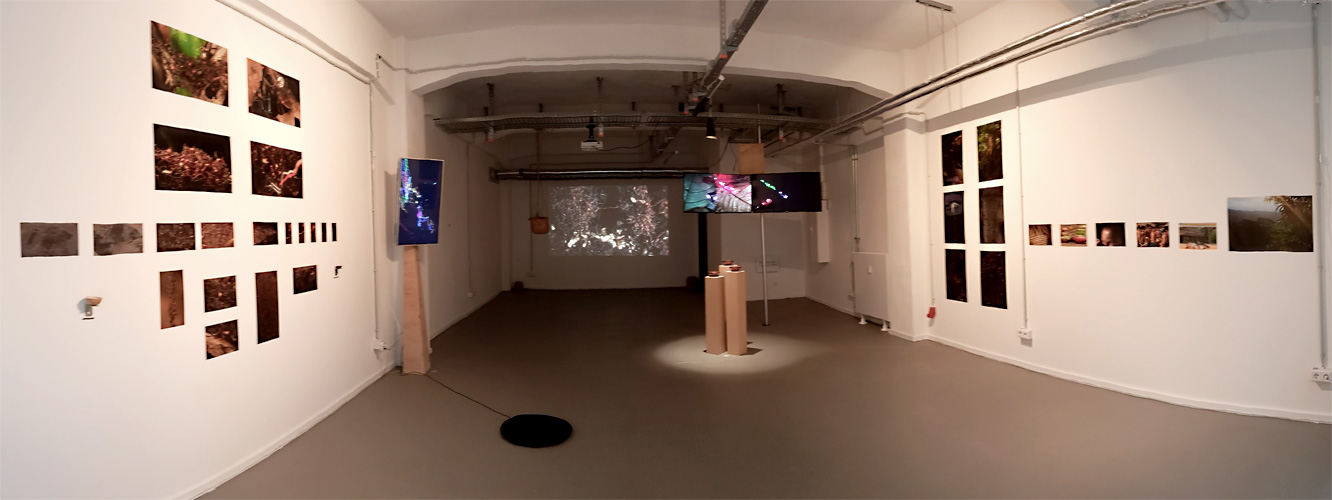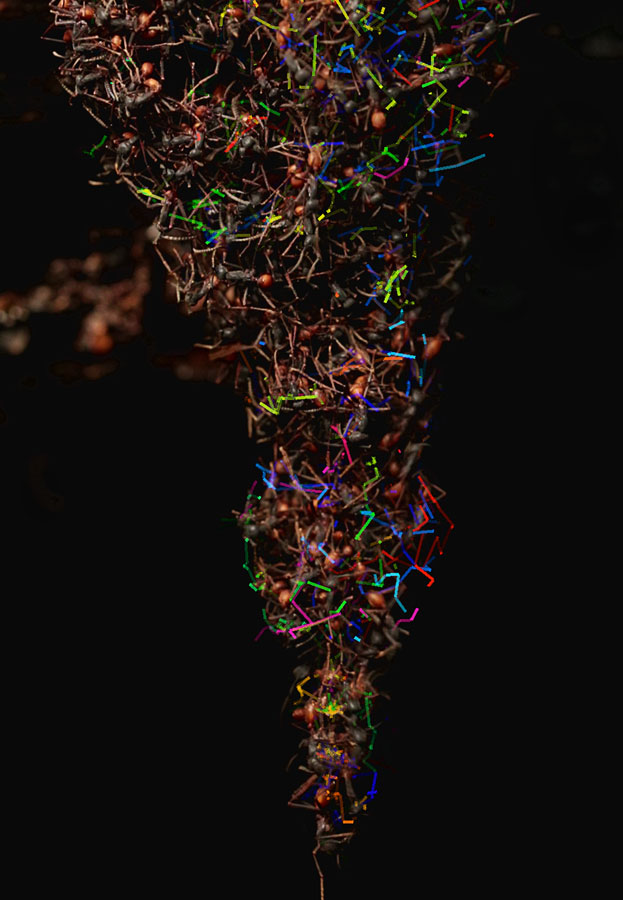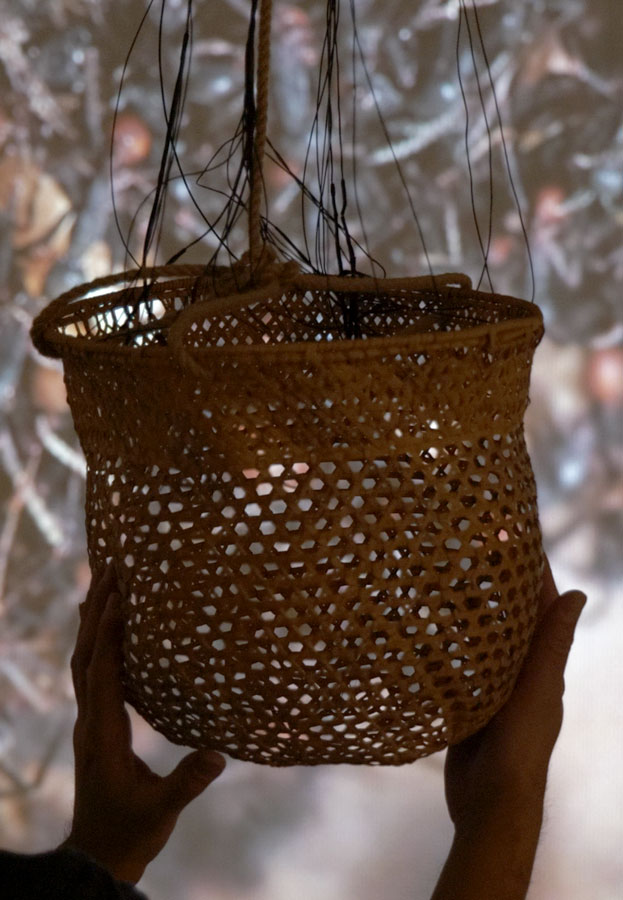The rain ants of Sarayaku
In Sarayaku, Kichwa nation of the Amazon, the actions of turning with rhythm afford weaving practices that sustain multispecies relations and ecological livelihoods. Turns, rhythms, and weaving constitute vital forms of creation ascribed to nonhuman kin and planetary agencies. Tiam (radical turns), taki (rhythm), and awana (weaving) are care-taking practices for worlding with earth beings. Guided by these decolonial performances and based on an ontology of territorial relations that sees the rainforest as a superorganism, what the people call Kawsak Sacha (living forest), I amplify the fluid migrations and corporeal forms of army ants.
Army ants have a different identity in Sarayaku. They are known as tamya añanku, the rain ants. They are territorial weavers who flush away unwanted animal dwellers from huts, and transform into political messengers of territorial conflicts in peoples’ dreams. Using their bodies as weaving materials they turn themselves into shelters and bridges over water and terrain irregularities. In times of unprecedented climate change, this rain-ant interrelation shows the values of including multispecies indigenous knowledges in scientific and artistic methods to create a better planetary awareness.
By means of tactical mediations using the Kichwa concepts of tiam, taki, and awana, I repurpose electronic sensors, machine algorithms, and olfaction to turn colonially-biased scientific descriptions of army ants around and upside down: a multi-sensory installation composed of photos, videos, sounds, water vibrations, conductive threads, and synthetic odours. The distinct scent of rain ants, skatole, and the smell of wet earth, geosmin, complement the olfactory experience. Tactile interaction with a Sarayaku basket modifies audiovisual projections, while conductive threads, driven by data of ants crossing laser barriers, contact water in earthenwares to play sounds. Media combines with handcrafted social vessels of Sarayaku culture to reveal this unique rain-ant interrelation.
In Sarayaku, movements weave rhythms, rhythms weave movements, and a world is being brought into life through the weaving of multispecies relations with earth beings.
Tamya añanku are active participants in the weaving of territorial resistance and their invertebrate movements and rhythms unfold a spectrum of performances. Weaving and the ants’ relation to rain and water is the centre of my work. As rain messengers their identity is inseparable from the territorial and cultural values of Sarayaku. The messages they convey and the role they play in this Amazonian indigenous culture challenge colonially biased scientific practices that have classified their behaviours as nomadic, naming them army ants of the species Eciton burchellii using militaristic and imperialist analogies.
The rain ants of Sarayaku is a multi-sensory installation, the final examination for the PhD degree of the School of Humanities and Social Sciences, Faculty of Arts and Education, at Deakin University. The artistic results of four years of practice-led research were shown at a disclosed location in Cologne, Germany, from the 21st to the 25th of November 2022. Composed of three parts, this exhibition complements the submitted thesis. My multi-sensory installation was meant to be experienced in person, and after reading the thesis. Now, this website documents the audiovisual elements of that experience and includes the methodology chapter to understand the artistic production behind the exhibition.
You can access diverse parts of the documentation by clicking on the images: the one above this text shows a full documentary of the installation, the ones below show each installation module based on the three performative concepts of the Sarayaku culture, which guided my artistic methods using electronic media:
The Rain Ants of Sarayaku
by Kuai Shen
dausonorteg[a]deakin.edu.au
email me if you want to read the full thesis =)
Practice-led Research PhD
Deakin University
School of Sciences and Humanities
Faculty of Arts and Education
Melbourne, Australia
Supervisors
Eben Kirksey
Jondi Keane / Cameron Bishop
David Turnbull
PhD and art production funded by Deakin’s High Degree Research scholarship
Based on fieldwork and practice-led research conducted in the Amazonian community of Sarayaku (2019-2022). Their knowledges, practices, and worldviews guided the production of this artwork.
Open-access software for motion tracking: TRex by Tristan Walter
Open-access code for neural style transfer: TensorFlow implementation by Anish Athalye
Synthetic olfaction by Dr Alexandra Latnikova of Fraunhofer Institute for Applied Polymer research



